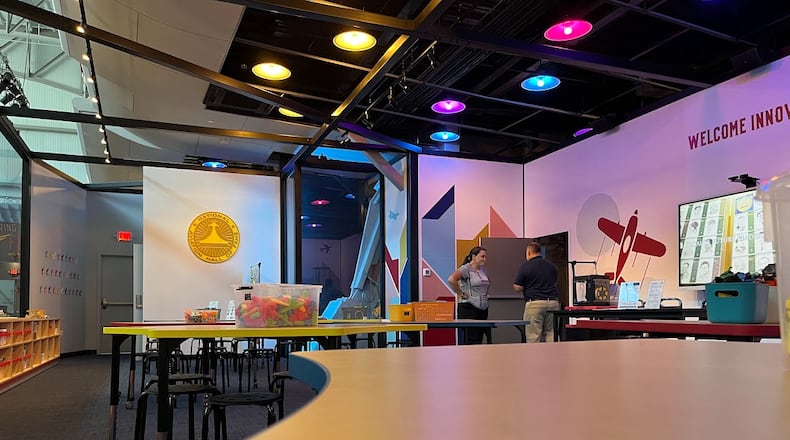The hall (or “NAHF”) opened the Joe Clark Innovation Lab Thursday afternoon, named for an aeronautical engineer and entrepreneur who was inducted into the hall in 2022.
The lab’s mission: Inspire and educate the next generation of aerospace pioneers.
Fueled by a $1.5 million investment, this1,600-square-foot space is expected to offer an anticipated 400,000 annual visitors a hands-on experience in aviation and aerospace innovation.
Here, families and students will find flexible workspaces and curriculum-based projects.
The space has a studio equipped with 3D-printers and scanners, a rotating collection of aviation materials for hands-on learning, and a nook for brainstorming and reading.
The NAHF will work with the Southwest Ohio Education Technology Association and Dayton’s ThinkTV to develop class and field trip programs.
“It’s a place where imagination takes flight,” said Aimee Maruyama, president and chief executive of the NAHF. “By providing students with the tools and inspiration they need, we are fostering the future leaders of aerospace and continuing the legacy of innovation that defines our nation’s aviation history.”
The hall’s space, found nestled between the Air Force Museum’s first and second hangars, has benefitted from steady investment over the years, Maruyama said.
It offers visitors a colorful timeline of aviation history best enjoyed with a slow stroll, from a Saturn 5 faux-rocket enclosure, a mock air traffic control tower and exhibits letting visitors take the rudder of an early Wright Brothers flyer or capture satellites.
In 2020, the hall overhauled the gallery area and created a mural at the hall’s entrance. Two years later, a small “Discovering Flight” theater was opened. And in two years or so, Maruyama hopes to create more interactive features, spotlighting enshrinees and maybe making flight simulators available.
“This is where we want you to sit down, make things, see some aviation, have fun,” she said.
The lab was made possible by the state of Ohio, the Bruce R. McCaw Family Foundation, the Ohio Facilities Construction Commission, the Berry Family Foundation, the Kettering Fund and others.
About the Author


